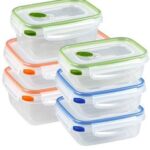Pet food packaging serves several important functions, catering to the unique needs of both pets and their owners. Here are some key aspects of pet food packaging:
Preservation and Protection: Pet food packaging is designed to preserve the freshness and quality of the food. It protects the contents from moisture, air, light, and pests, helping to prevent spoilage and maintain nutritional value.
Convenience: Packaging for pet food often includes features that make it easy for pet owners to store, handle, and dispense the food. This can include resealable closures, easy-open tabs, and portion control options.
Information: Packaging provides important information to pet owners, such as ingredients, nutritional content, feeding guidelines, and expiration dates. Clear labeling helps consumers make informed choices about the food they provide for their pets.
Brand Identity and Marketing: Packaging plays a crucial role in establishing brand identity and attracting consumers. Eye-catching designs, colors, and logos help pet food brands stand out on store shelves and convey their unique positioning and values.
Safety: Pet food packaging must meet safety standards to ensure that the food remains uncontaminated during storage and transportation. This includes using food-grade materials and adhering to regulations for packaging and labeling.
Sustainability: There is a growing demand for sustainable pet food packaging options, driven by environmental concerns and consumer preferences. Brands are increasingly using recyclable, biodegradable, and compostable materials, as well as reducing packaging waste and adopting eco-friendly manufacturing practices.
Specialized Packaging: Some pet foods require specialized packaging to meet specific needs. For example, wet pet food often comes in pouches or cans to maintain moisture and freshness, while dry pet food is typically packaged in bags or boxes for easy storage.
Innovations: The pet food packaging industry continues to innovate with new materials, designs, and technologies. This includes features like barrier films for extended shelf life, interactive packaging for consumer engagement, and smart packaging for traceability and freshness monitoring.
Overall, pet food packaging plays a crucial role in ensuring the quality, safety, and appeal of pet food products. As consumer preferences and sustainability concerns evolve, the industry is likely to see further advancements and improvements in pet food packaging solutions.






